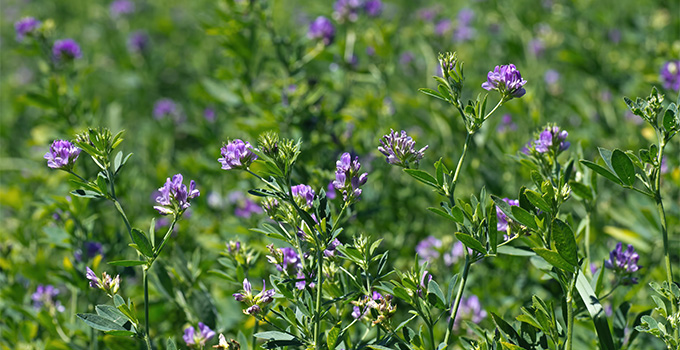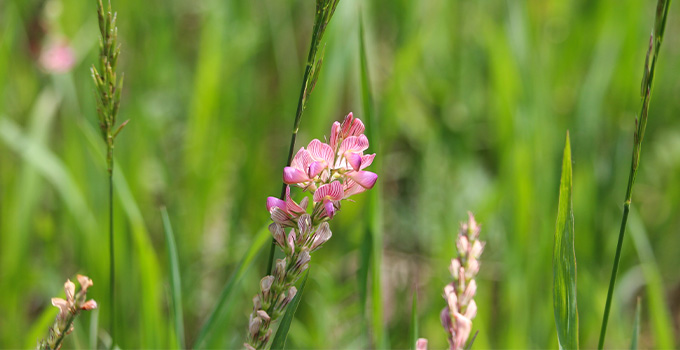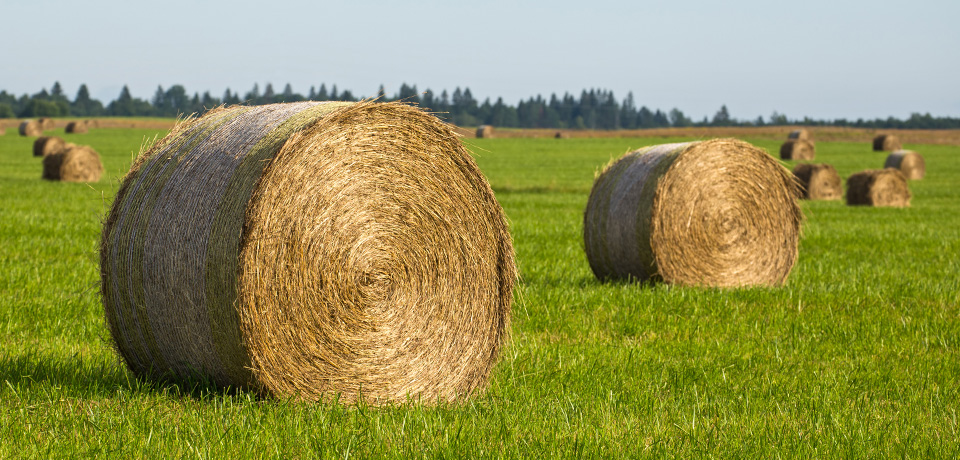The forage on your farm affects the performance of your livestock and your bottom line. For best results, you need to select a forage species or mixture suited to your specific needs and geographic location.
Forage variety selection and careful establishment can help ensure a successful forage stand with maximum profitability. When establishing a forage stand, it is important to control weeds in the year prior to seeding. Weeds – such as narrow-leaved hawk’s beard, sow thistle and Canada thistle – can be very difficult to control after seeding a forage crop. Carryover of residual herbicides are also important to consider as they can severely impact stand establishment. In addition to careful weed control in the year prior to establishment, a non-residual burn-off product can help get the crop off to a weed-free start.
Spring seeding (mid-April to June) provides the best chance of establishment due to reduced winterkill, weed competition, and better use of spring moisture. A firm seed bed is needed for good forage establishment. This results in good seed-to-soil contact, improves seeding-depth control and reduces surface drying. Walking on a firm seed bed should not leave a footprint deeper than a quarter-inch. Shallow seeding depths of one-quarter to a half inch in heavier textured soils, and a half to three-quarter inch in lighter soils with on-row packing, ensures seed-to-soil contact and good germination.

It’s important to remember that the most cost-effective time to fertilize a forage crop is at seeding. Consider applying higher rates of phosphorus, potassium and sulphur to provide a stable nutrition base for years to come. Fifteen pounds per acre of phosphorus can be safely seed-placed. Higher rates must be banded away from the seed row to avoid seedling damage. Include nitrogen-fixing legumes like alfalfa, sweet clover, cicer milkvetch or sainfoin in the blend.
Cover crops can be utilized where moisture is not limiting or if erosion is a concern. They can, however, reduce yield or compromise stand vigour. The recommended seeding rate for a cover crop is one-third to one-half that of normal seeding rates. It is important to harvest the cover crop early as greenfeed or silage to reduce competition for the establishing forage. An alternative to a true cover crop is to consider seeding a skeleton crop to still supply a degree of wind protection and shading to the establishing forage stand with minimal competition. Seeding rates for a skeleton crop are typically five to 10 pounds per acre. The larger seed of the crop also helps to increase the flowability of the forage seed.

There are many factors to consider when selecting a forage species. The first consideration is whether the forage crop will be used for hay or pasture. If it is used for grazing, how intensely will the crop be grazed, and will it be rotational or continuously grazed? What is your comfort level with alfalfa? If your comfort level is low, then considering cicer milkvetch or sainfoin may be options for including non-bloating legumes in the mixture. Another consideration is when do you want the forage to be available? Are you grazing early in the spring, summer or stockpiling the forage for fall or winter grazing?
Soil type is also important to consider. Is it clay, loam or sandy? Do you have issues with salinity, flooding or erosion? The presence of one or more of these soil characteristics will determine which forage or blend to use.
To help you make the right choice, Co-op provides a full line of forage seed varieties and blends, as well as expertise and agronomic support. Your local Co-op Grow Team is skilled in assessing each farm's unique needs in helping you plan for a healthy forge crop.

